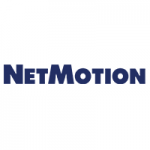NetMotion: New report reveals research and best practice for legal IT
Countless articles have been published on the impact of the pandemic on the typical working environment already – many of them right here on this site. As many organisations prepare to ‘return’ to work, the future of the workplace remains uncertain. For some sectors, such as the aviation or public safety industries, remote or hybrid working is not an option. You can’t refuel a plane or apprehend a suspect from the comfort of your home. You can, however, prepare a legal document from almost anywhere, provided you have the right supporting technologies to do so.
That’s why the legal sector has been propelled from a fairly cautious operator to one of the most innovative and progressive, with law firms adopting new approaches to working at a pace never seen before. The past 18 months have seen law firms apply a number of novel initiatives, from the implementation of new tools (e.g. Microsoft365, zero trust security, experience monitoring) and architectures (cloud, SaaS) to radical processes like flexible work hours and hotdesking.
Attempting to keep up with the latest best practices in the legal sector is a challenge in itself. NetMotion commissioned a study into 150 law firms across the US, UK, Australia, Germany and Japan in early 2021 to better understand and quantify the thinking among IT leaders. It also hosted over 50 dedicated legal IT webinars worldwide, facilitating conversations between 500+ professionals to discuss topics across the wider digital transformation theme: cloud, network security, collaboration, policies, talent acquisition, skills gaps, diversity and more. Findings from this research and these conversations have been compiled into a brand new report exclusively for the legal sector.
Key research findings
The new report features exhaustive analysis from multiple sources, helping law firms benchmark and compare their own strategies against the rest of the marketplace. It also includes insightful case studies from Osbourne Clarke and Brenna Manna Diamond and practical examples of digital transformation among law firms. Findings from the report include:
- Unreliable network connectivity and/or speed and poor application performance are unequivocally the biggest barriers to maximising the end user experience for a permanently hybrid workforce. Some of the most reported issues to IT over the past year include Zoom/Microsoft Teams audio and video problems; consistent MFA re-authentication, application crashes and failure to access cloud resources, among other frustrations.
- To improve the user experience, CIOs and IT leaders require greater real-time data and insights into devices, networks, and applications; more visibility into remote-work specific security threats and enhanced diagnostics on issues encountered by remote workers.
- To better support the firm, CIOs and IT leaders also report needing greater insights into remote work specific threats, diagnostic issues reported by remote workers and data on usage intensity of websites and apps.
- Specifically, to better support remote work, CIOs and IT leaders report wanting more real-time data on connectivity issues, details on network traffic split out of the VPN tunnel, app usage stats and specifics on where network traffic is going.
- Physical locations will be the main place of work for less than 35% of law firms post pandemic, with nearly 50% remaining permanently hybrid.
- Only 12% of law firms still have more than three-quarters of core applications hosted on-premises, although less than half (44%) have managed to migrate the majority of their resources to the cloud.
A roadmap for law firms
The pathway ahead will be both exciting and difficult for legal IT. Leaders must be prepared for rapid change, embracing scalability and agility across every initiative. The report lists a number of projects that have become the focus for most law firms in 2021 and beyond. These include attempts to significantly improve the employee experience for remote workers, supporting cloud migrations and M365 implementations, increasing billable minutes for fee earners and upgrading secure access for zero trust and SASE frameworks. Many legal IT leaders will also seek to eliminate network problems and better diagnose remote worker IT issues, ideally by getting increase levels of visibility into distributed workforces. For a detailed breakdown of the myriad challenges posed and opportunities presented for the modern law firm, access the full report for free here.



